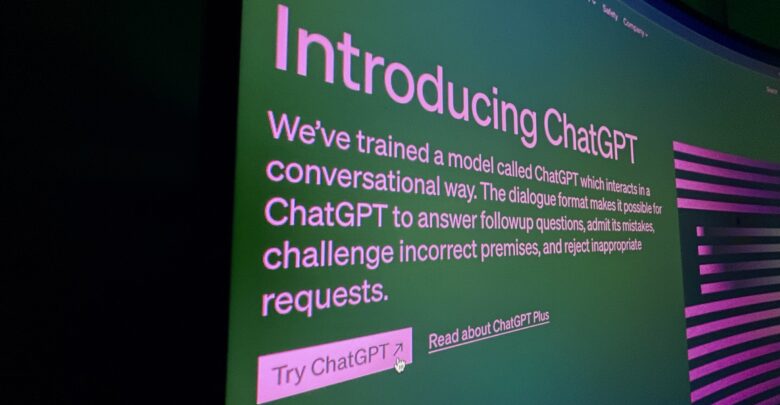 Lily Polenchuk
Lily PolenchukMany advancements in education have faced initial skepticism, often labeled as a potential avenue for cheating. This pattern is a natural response to any novel technology, where creating guidelines for its use becomes a priority post-invention. Right now, artificial intelligence (AI) is not causing any dramatic chaos. But, its introduction is similar to how people first reacted to calculators or Wikipedia. Instead, educational authorities should efficiently adapt and incorporate AI into their learning frameworks.
Initially, AI may seem like a straightforward tool for academic dishonesty. Especially with the introduction of ChatGPT last year, as it has the efficiency to give you a straightforward answer to assignment questions or essays. However, a closer examination reveals its distinct patterns. Several professors, even without specialized AI detection software, can identify ChatGPT-generated content.
AI responses, while varied, aren’t limitless, making it unlikely for an entire class to generate wholly unique answers. In terms of writing, ChatGPT can skillfully rewrite its ideas, yet discrepancies in style can identify its use. These discrepancies can make it obvious that a student is using AI, and therefore discourages plagiarism at the high-risk of being caught. As such, ChatGPT is the ideal candidate for a learning-aid instead.
With the right prompts, generative AI can facilitate learning virtually anything from scratch. Its various extensions offer significant educational support. In many academic courses, students are often required to independently learn difficult concepts to fully understand the material. AI simplifies this process. A remarkable feature of ChatGPT is its capability to adapt its instructional approach to the user’s existing knowledge level, offering a personalized learning experience. This level of customization is typically hard for teachers to achieve. Yet, it can save students considerable time they would otherwise spend searching for comprehensive study materials.
It’s imperative to address that while AI can be a powerful tool for learning, there’s a fine line between assistance and academic dishonesty. Educational institutions must clearly distinguish between using AI as an aid and relying on it for answers. This requires teaching students the ethical use of technology and the value of originality. In turn, this ensures AI is used to enhance, not replace, their learning and problem-solving skills. This isn’t possible without establishing clear guidelines by educational institutions. This current apprehension about academic dishonesty involving AI tools will not deter students from utilizing these tools.
Just as search engines like Google changed the landscape of academic assignments, incorporating AI tools like ChatGPT can similarly evolve educational practices for the better.
I had a professor who used ChatGPT to create coding assignment frameworks. The professor left critical blanks for us to fill-in with the appropriate code. These assignments were structured in such a way that ChatGPT couldn’t provide direct answers. As well, there were multiple ways to reach the solution. Therefore, us students ended up using ChatGPT to help understand the problems, rather than solve them. This approach requires creativity and effort from educators, but is crucial for advancing educational methods.
The main challenge arises for literature students, where mastery of the English language is essential. However, with diligent inspection and tools, professors can still spot ChatGPT-generated text. But, students could use ChatGPT for getting feedback on their writing. Additionally, ChatGPT can be a valuable resource for those who have great ideas but lack the skill to articulate them coherently when writing. Platforms like Medium permit the use of ChatGPT, provided the authors acknowledge it in their references. Policies like this not only legitimize the use of ChatGPT, but also support those who struggle to express ideas well in written form.
In this age, where generative AI is readily accessible to students, it’s ineffective to ban its use in coursework entirely. Educational institutions should instead create guidelines for appropriate use. A good example is the University of Alberta allowing students to use generative AI, provided the student mentions the AI tool as a reference. For instance, students could use ChatGPT for problem-analysis in subjects like mathematics. However, the final solution should be entirely their own, ensuring academic integrity.
Ultimately, the integration of ChatGPT and similar AI tools in education represents a significant step forward in the evolution of learning methods. While concerns about academic integrity and the potential for misuse are valid, the benefits of AI as a personalized learning-aid and a tool for enhancing critical-thinking skills are undeniable. Educational institutions must, therefore, embrace this technology with well-defined guidelines and ethical frameworks to maximize its potential.
It’s time for educators and policy-makers to look past AI as a threat. We should view AI as a catalyst for a new, more effective form of education. As we stand at this new frontier in education, let us move forward with a commitment to innovation, integrity, and inclusivity in harnessing the full power of AI for educational excellence.




